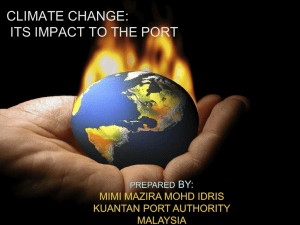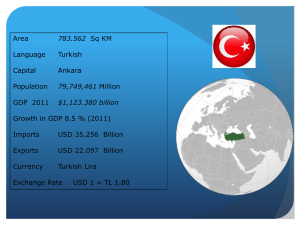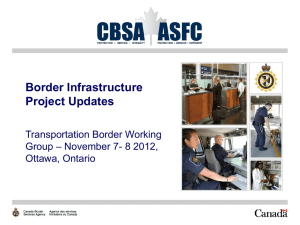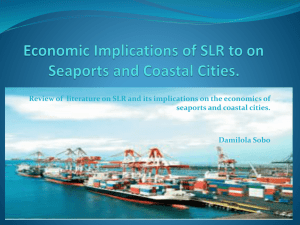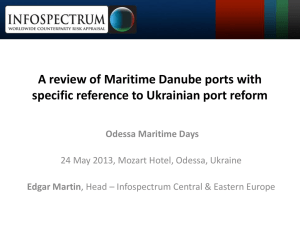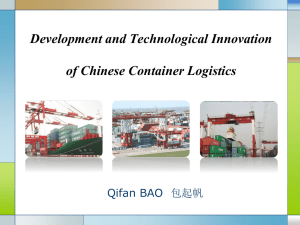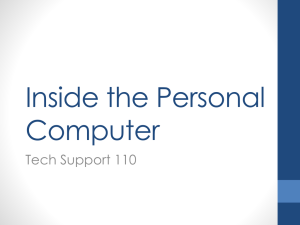powerpoint slides - Faculty of Business and Economics
advertisement
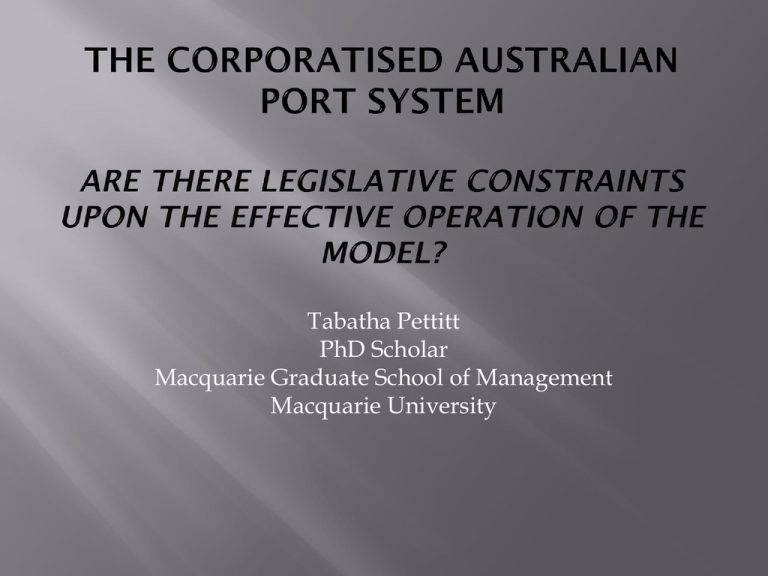
Tabatha Pettitt PhD Scholar Macquarie Graduate School of Management Macquarie University The focus of my research is the corporatisation of Australia’s government-owned ports and their port corporations Port corporations manage and operate ports in Australia Corporatisation is a structural reform process which aims to make government-owned entities commercially-focused and distance them from government interference It involves adoption or amendment of legislation to establish corporatised entities such as port corporations Corporatisation was introduced in Australia to reform ports beginning with NSW in the 1980s. The rationale for its introduction were efficiency gains and increased competition 2 Australia has over fifty ports around its vast coastline The term “port” includes not only the waterside but also the surrounding land (hinterland) The only jurisdiction in Australia that does not have a port is the landlocked Australian Capital Territory Each state jurisdiction and the Northern Territory is responsible for creating and maintaining its port legislation. Recent calls for the Commonwealth to legislate for the ports met with state and territory opposition There is no uniform port legislation in Australia – legislation has been enacted on a “needs” basis in each jurisdiction 3 Most of Australia’ major commercial ports are government-owned and deal with containers and bulk products such as grain and wheat. The Port of Melbourne is Australia’s busiest container port Since 1995 South Australia’s ports, the Port of Brisbane and the Victorian ports of Geelong and Hastings have been privatised. These ports are not subject to port corporatisation legislation New South Wales, Tasmania, Queensland, the Northern Territory and Victoria (Melbourne & Hastings) have port legislation that govern their port corporations as corporatised entities 4 Over the last few decades Australian governments have undergone intensive economic reform Much of the public sector was found to be inefficient and under-performing Australian port performance was reviewed at this time and the 1989 Inter-State Commission Report found them to be inefficient and in need of reform if they were to remain government-owned 5 At this time, Australia’s ports were part of government departments. This meant that they were often subject to much governmental and bureaucratic interference which was seen to impede their operations In 1993 the Industry Commission argued that if the ports were to remain in government hands, there needed to be a distancing from this interference It was suggested that ideally the port authorities should act as a landlord for the ports whilst the commercial operations were leased out to the private sector 6 Why not just privatise the ports? Most commercial ports were generally deemed too important to the economy to privatise (those that were sold were making very large losses) Corporatisation was seen to be the answer Corporatisation was previously used overseas for port management, such as in the UK and Europe. In the local region it was introduced in New Zealand in the 1980s (The “New Zealand Experiment”) Unlike in the UK and New Zealand, in Australia corporatisation was not part of a course of port privatisation (New Zealand either completely or partially privatised its ports) 7 Examines the two legislative models in use: Government-Owned Corporations (GOCs) and Statutory State-Owned Corporations (SSOCs) Uses the ports of Tasmania (TasPorts) (GOC) and the Port of Melbourne (SSOC) to investigate corporatisation Thesis uses a Case Study methodology 8 The Government-Owned Corporation (or GOC) is created in accordance with the Corporations Act 2001 (Cth) or state incorporation statutes. In Tasmania the Act is the Tasmanian Ports Corporation Act 2005 (Tas) The parliament is very limited as to what requirements it can include in the legislation as the Corporations Act 2001 (Cth) allows only minimal shareholder input The shareholding Ministers’ roles are limited to reporting to the parliament 9 The Statutory State-Owned Corporation (or SSOC) is created under a specific piece of legislation created for that entity. In Victoria the Act is the Port Management Act 1995 (Vic) There is potential for large degree of parliamentary input as the legislation is drafted from scratch. Therefore parliament can tailor-make provisions such as those relating to accountability to parliament and Ministerial control. The shareholding Ministers’ main powers are the power of veto over board decisions, to give directions that must be followed, and to make changes to port corporations as the Minister sees fit. Some of these powers may be exercised in order to meet the government’s own short-term goals, which may not be in the port’s best interests 10 There is no widespread agreement as to whether corporatisation has achieved its aims and benefited the Australian port industry. Many commentators have stated that it has not Whilst much of the literature states that the reforms have made the ports more customer-responsive, many still argue that there are still disadvantages with the corporatised structure 11 There is no agreement in the existing literature on what business model could achieve the desired aims of corporatisation. In fact there is no agreement on whether such a model exists To date there has been no detailed examination of the corporatised legislative models in Australia My research aims to fill in these gaps and investigate whether there is a model that better meets the aims of corporatisation than the existing models. Need to create a framework for this 12 WHAT is it about the corporatisation models used in Australian ports that prevent these aims being met? The current business models under the legislation prevent the distancing of government and therefore enable Ministerial interference that does not occur in non-government corporations Under the Westminster model of Parliamentary Responsibility there is a high level of accountability that must be followed. There is a chain of accountability from the Parliament (through the Ministers) to the voting public 13 (1) Does the legislation under each model (GOC and SSOC): (i) Distance government from the day to day operations of port corporations and free them from political control, the element seen as the cause of inefficiencies? (ii) Create an effective business model that enables the port corporations to respond to the forces of the market, which was the fundamental objective of reform? (2) Which model creates the more effective business model that allows for the aims of corporatisation to be met, that is the distancing of government from the daily operations of port corporations and enabling of port corporations to more effectively respond to the forces of the market? 14
